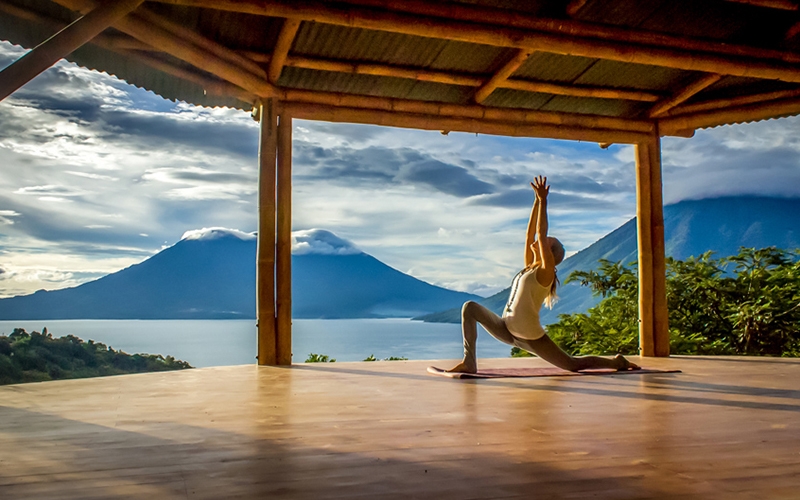
In today's fast-paced world, carving out time for self-care can feel like a challenge. A home yoga space offers a solution—a dedicated sanctuary where you can stretch, breathe, and reconnect with yourself without stepping out the door. Whether you're a seasoned yogi or a beginner, a personal yoga space provides unmatched convenience, cost savings, and the freedom to tailor your practice to your needs. From eliminating studio fees to practicing on your own schedule, the benefits are clear. This comprehensive guide will walk you through every step to create your ideal home yoga studio, covering space selection, essential equipment, atmosphere, personalization, maintenance, and tips for small or budget-friendly setups. Let’s transform a corner of your home into a peaceful yoga haven.
Choosing the Ideal Space for Your Yoga Practice
The foundation of a great home yoga space is selecting the right location. You’ll want a quiet, distraction-free area where you can focus without interruptions from household noise or activity. A spare bedroom, a corner of your living room, a basement nook, or even an attic can work beautifully. The key is to choose a spot where you feel at ease and can move comfortably.
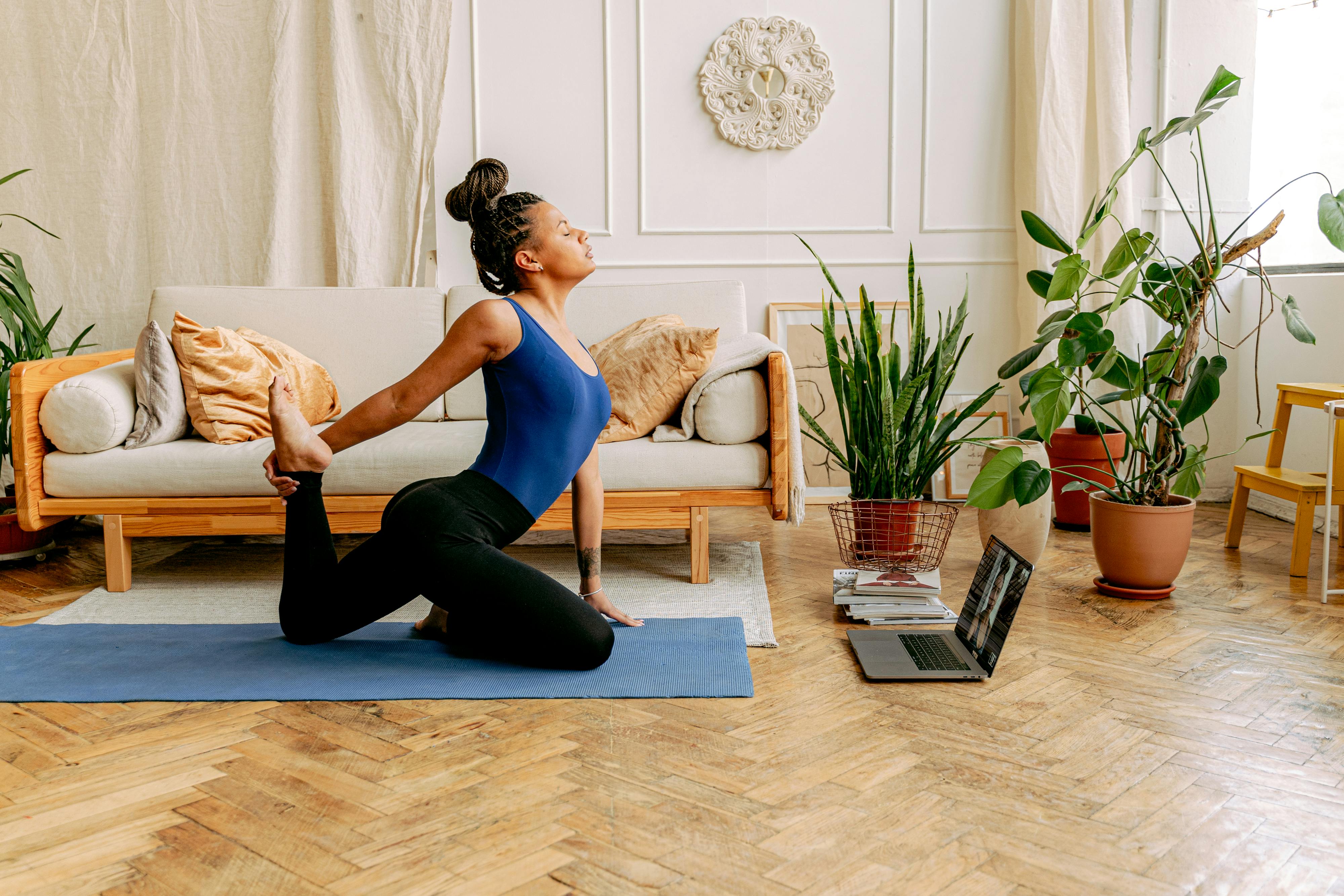
Space requirements are modest. A standard yoga mat measures about 24 inches wide by 68 inches long, roughly 11.3 square feet. To accommodate poses that involve extending arms or legs, aim for a clear area of at least 6 feet by 6 feet (36 square feet). This allows enough room for dynamic movements like Warrior poses or Downward Dog. If your home is cramped, don’t worry—smaller spaces can still be functional. You can practice in a hallway, focus on standing or seated poses, or temporarily push back furniture to create room.
Natural light can elevate your practice by connecting you to the outdoors and boosting your mood. If possible, choose a spot near windows or skylights, using sheer curtains to diffuse harsh sunlight. If natural light isn’t an option, ensure the area has adjustable lighting, such as dimmable lamps, to create a soothing ambiance. For small spaces, consider using folding screens or curtains to carve out a private yoga corner, helping you mentally shift into practice mode even in a multi-purpose room. A flat, stable surface—preferably not too hard or soft—is also essential to ensure safety and comfort during your practice.
| Consideration | Recommendation |
|---|---|
| Space Size | At least 6x6 feet for full movement; smaller for compact poses |
| Location | Quiet, distraction-free (e.g., spare room, living room corner) |
| Lighting | Natural light preferred; adjustable artificial lighting as backup |
| Surface | Flat, stable, non-slip (e.g., hardwood, carpet with mat) |
| Small Space Tip | Use folding screens or temporary furniture rearrangement |
Essential Yoga Equipment and Props
Equipping your home yoga space starts with a quality yoga mat, the cornerstone of a safe and effective practice. A good mat offers cushioning, grip, and stability, preventing slips and protecting joints. When choosing a mat, consider thickness (thicker for comfort, thinner for balance), material (natural rubber or PVC), and texture for grip. For home practice, where portability is less critical, a thicker mat (around 6mm) can provide extra cushioning, especially for those with sensitive knees or wrists.
Popular options include the Manduka PRO, praised for its durability and superior grip, and the Liforme Original, which features an alignment system to guide pose accuracy—ideal for beginners. Budget-conscious yogis can opt for mats like the BalanceFrom GoYoga, which offers decent quality at a lower price point. For those practicing hot yoga, look for mats with sweat-wicking properties, such as the Yogi Bare Paws.
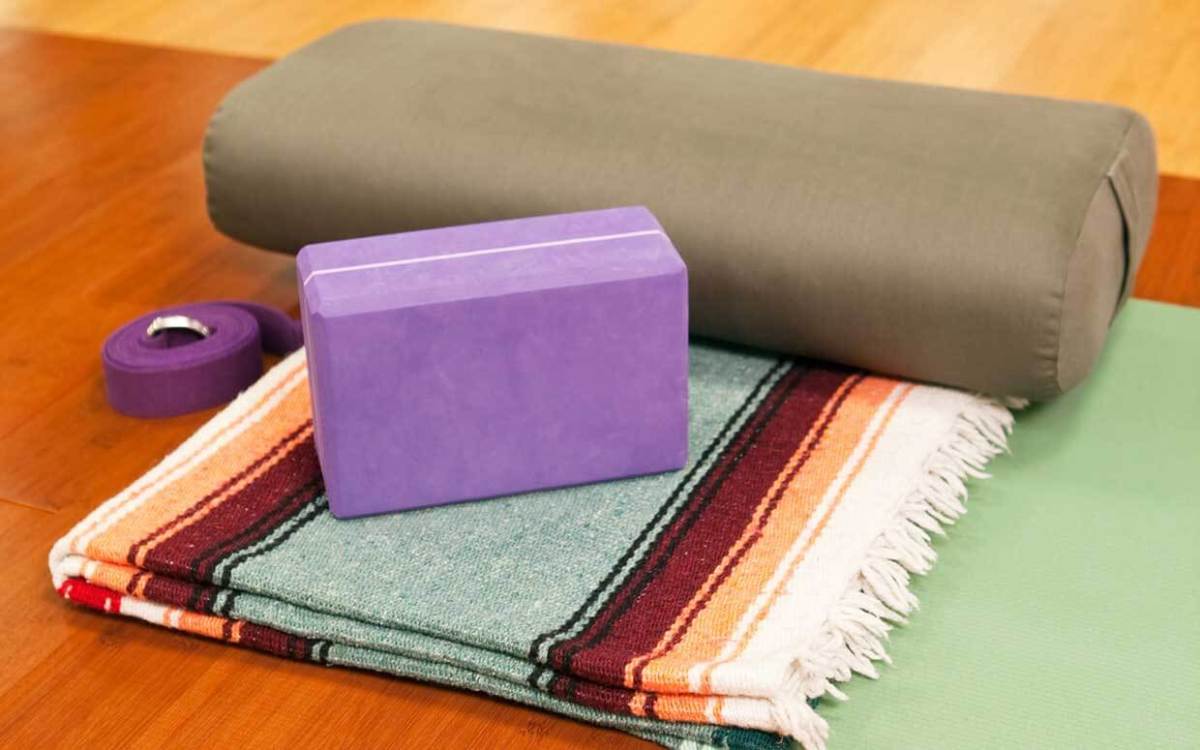
Beyond a mat, yoga props can enhance your practice by providing support, improving alignment, and making poses more accessible. Consider these essentials:
- Blocks: Help bring the floor closer in standing poses or support seated positions.
- Straps: Assist with stretching and reaching, especially for hamstring or shoulder flexibility.
- Bolsters: Provide comfort in restorative poses, promoting relaxation.
- Blankets: Offer cushioning for sitting or warmth during meditation.
If investing in props isn’t feasible, household items can serve as substitutes. Use thick books or sturdy boxes for blocks, belts or scarves for straps, and firm pillows or rolled towels for bolsters. These alternatives are cost-effective and readily available, making yoga accessible to all.
To keep your space tidy, incorporate storage solutions. Wall hooks are perfect for hanging mats and straps, while small cabinets or shelves can house blocks and bolsters. Baskets or bins work well for smaller items like blankets. A clutter-free space not only looks inviting but also supports a focused mindset during practice.
| Equipment/Prop | Purpose | Budget Alternative |
|---|---|---|
| Yoga Mat | Cushioning, grip, stability | Non-slip rug or carpet |
| Blocks | Support, alignment | Thick books, sturdy boxes |
| Straps | Stretching, flexibility | Belts, scarves, towels |
| Bolsters | Restorative support | Firm pillows, rolled towels |
| Blankets | Cushioning, warmth | Thick towels, throws |
Creating a Calming and Inviting Atmosphere
The atmosphere of your yoga space significantly influences your practice, helping you relax and stay present. A serene environment can make the difference between a distracted session and a deeply fulfilling one.
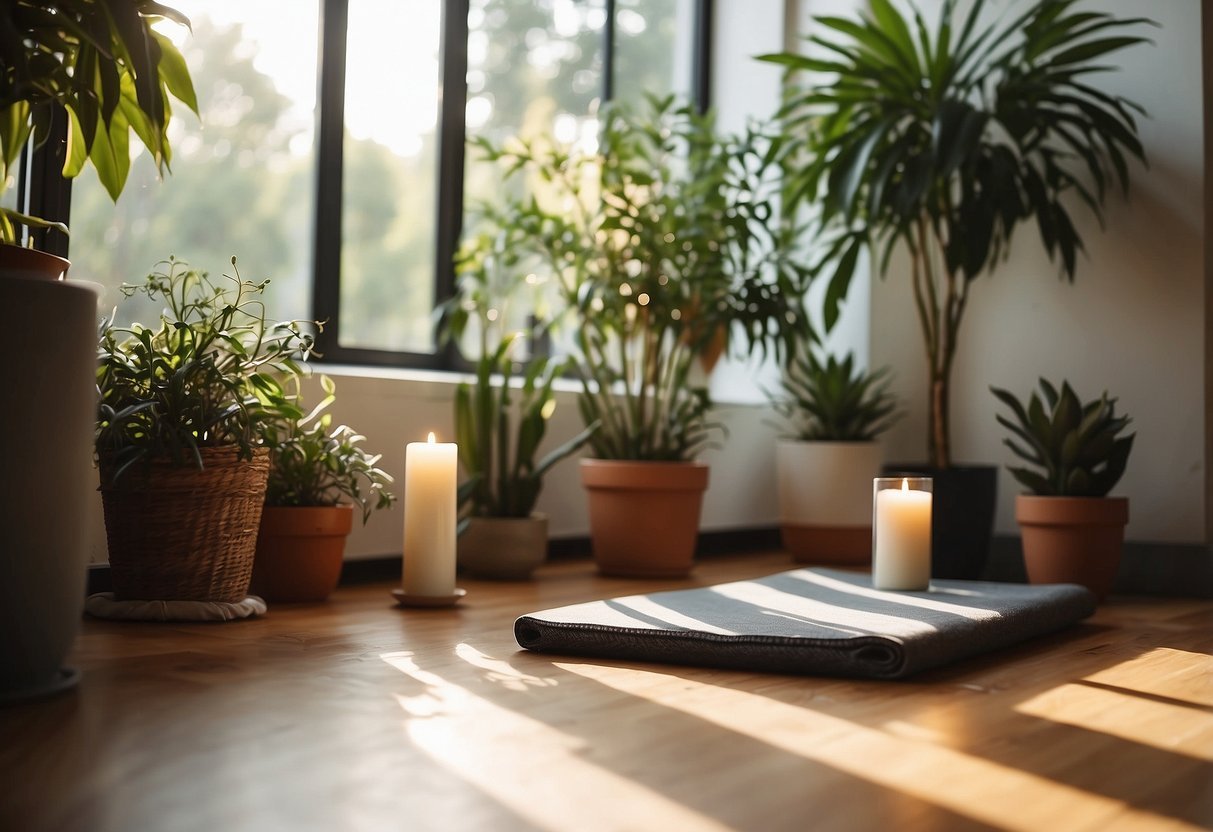
Lighting is a critical element. Natural light, ideally from windows or skylights, fosters a connection to nature and uplifts your mood. Use sheer curtains to soften direct sunlight, preventing glare. If natural light is limited, opt for soft, warm artificial lighting, such as dimmable lamps or string lights, to create a cozy ambiance. Avoid harsh fluorescent lights, which can feel jarring.
Scent can enhance your practice through aromatherapy. Essential oils like lavender, known for its calming properties, frankincense for meditation, or eucalyptus for mental clarity can be diffused using a diffuser or applied via a spray. Palo Santo or sage can be used for cleansing the space, creating a sense of renewal. Be mindful of sensitivities, especially if sharing the space, and use scents sparingly.
Plants bring life and tranquility to your yoga space while improving air quality. Low-maintenance, air-purifying plants like snake plants, peace lilies, or pothos are excellent choices. They thrive in indirect light and require minimal care, making them ideal for busy yogis. A few well-placed plants can evoke a sense of grounding and mindfulness.
Color schemes should promote calm and focus. Soft blues and greens are soothing, while warm whites convey purity and simplicity. Earth tones like beige or terracotta can create a grounding effect. Avoid bright, stimulating colors like red or neon shades, which may disrupt relaxation. Consider the 60:30:10 rule—60% primary color (e.g., walls), 30% secondary (e.g., mats), and 10% accent (e.g., décor)—for a balanced look.
Sound can further elevate the atmosphere. Playing soft instrumental music, nature sounds, or using a sound machine can mask external noise and deepen your focus. Alternatively, some prefer silence or guided meditations for a distraction-free experience.
| Element | Recommendation | Benefits |
|---|---|---|
| Lighting | Natural or dimmable warm lights | Uplifts mood, creates calm |
| Scent | Lavender, frankincense, eucalyptus | Promotes relaxation, focus |
| Plants | Snake plant, peace lily, pothos | Purifies air, adds tranquility |
| Colors | Soft blues, greens, warm whites | Soothes, enhances focus |
| Sound | Soft music, nature sounds | Reduces distractions, deepens practice |
Personalizing Your Yoga Sanctuary
Personalizing your yoga space makes it a true reflection of your personality and intentions, deepening your connection to your practice. A space that feels uniquely yours can inspire consistency and emotional resonance.

Meaningful décor sets the tone. Consider items like Buddha statues, Hindu deities, or mandala tapestries that align with your spiritual or aesthetic preferences. These can serve as focal points during meditation or add visual harmony. Intention cards or vision boards can remind you of your practice’s purpose, such as cultivating gratitude or strength.
Creating an altar is a powerful way to anchor your space. A small table or shelf can hold sentimental objects like crystals, candles, photos of loved ones, or natural elements like stones or shells. This altar can be a place to set intentions, meditate, or simply pause and reflect before or after practice.
Eco-friendly materials align with yoga’s emphasis on harmony with nature. Choose sustainable flooring like bamboo or cork, which are durable and barefoot-friendly. Opt for organic cotton or hemp textiles for curtains or cushions, and select props made from natural rubber or recycled materials. Low-VOC paints ensure better air quality, supporting a healthy practice environment.
Inspirational quotes or artwork can motivate and focus your practice. Frame sayings from yoga philosophy, such as “Inhale peace, exhale stress,” or display serene landscapes that evoke calm. A small shelf with yoga books or journals can also inspire learning and reflection.
The goal is to create a space that feels authentic to you, whether it’s minimalist and serene or vibrant and eclectic. Let your personality shine through in every detail.
| Personalization | Examples | Purpose |
|---|---|---|
| Décor | Buddha statues, mandalas | Spiritual focus, visual appeal |
| Altar | Crystals, candles, photos | Intention-setting, reflection |
| Eco-friendly Materials | Bamboo flooring, organic cotton | Sustainability, health |
| Inspirational Elements | Quotes, serene artwork | Motivation, focus |
Maintaining Your Yoga Space
A clean and organized yoga space is essential for hygiene and maintaining a peaceful environment. Regular maintenance ensures your sanctuary remains inviting and functional.
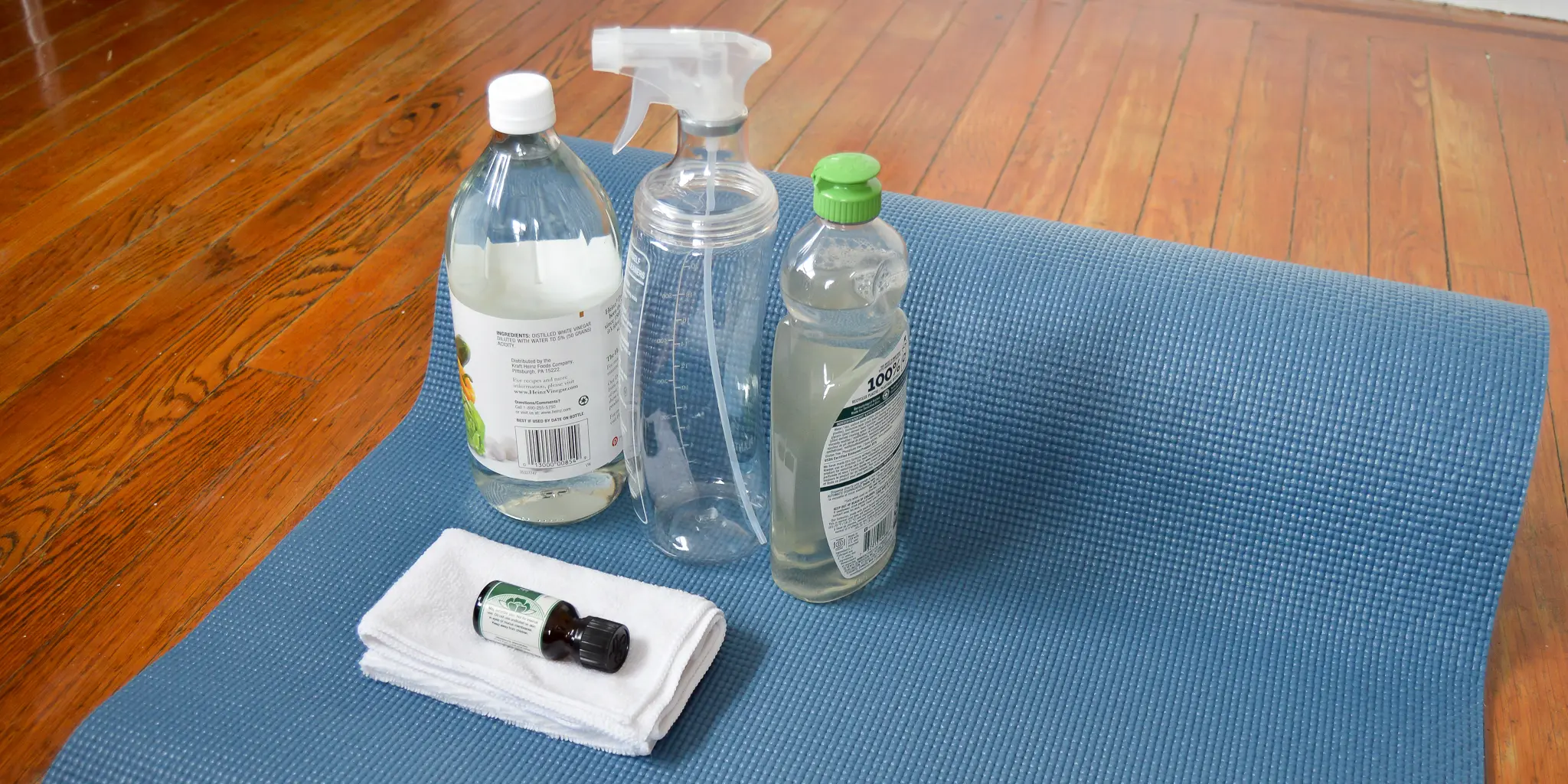
Cleaning mats and props prevents the buildup of sweat, bacteria, and odors. After each practice, wipe your mat with a soft cloth or sponge using a natural cleaner, such as a 1:4 mix of white vinegar and water or a few drops of mild soap. For deeper cleaning, check your mat’s care instructions—some can be submerged in soapy water and air-dried. Avoid harsh chemicals that may degrade the material. Props like blocks can be wiped with a damp cloth, while straps and blankets should be washed according to their care labels. Bolsters may require spot cleaning or professional care if not machine-washable.
Establish a post-practice routine to keep the space tidy. Roll up your mat, store props in designated spots (e.g., shelves or baskets), and take a moment to reset the area. This habit ensures your space is always ready for your next session and reinforces a sense of order.
Airing out the space refreshes the air and brings positive energy. Open windows for a few minutes before or after practice to circulate fresh air. If windows aren’t available, use a fan or air purifier to maintain air quality.
Decluttering regularly keeps the space focused. Remove unnecessary items, ensuring only yoga-related essentials remain. A minimalist approach enhances the sense of calm and prevents distractions.
| Maintenance Task | Method | Frequency |
|---|---|---|
| Mat Cleaning | Wipe with vinegar/water or soap | After each use; deep clean monthly |
| Prop Cleaning | Wipe blocks/straps; wash blankets | Weekly or as needed |
| Tidy-Up Routine | Store props, roll mat | After each practice |
| Airing Out | Open windows or use purifier | Daily or per session |
| Decluttering | Remove non-essentials | Monthly |
Enhancing Your Home Yoga Practice
To maximize the benefits of your home yoga practice, incorporate strategies that build consistency and deepen your experience.
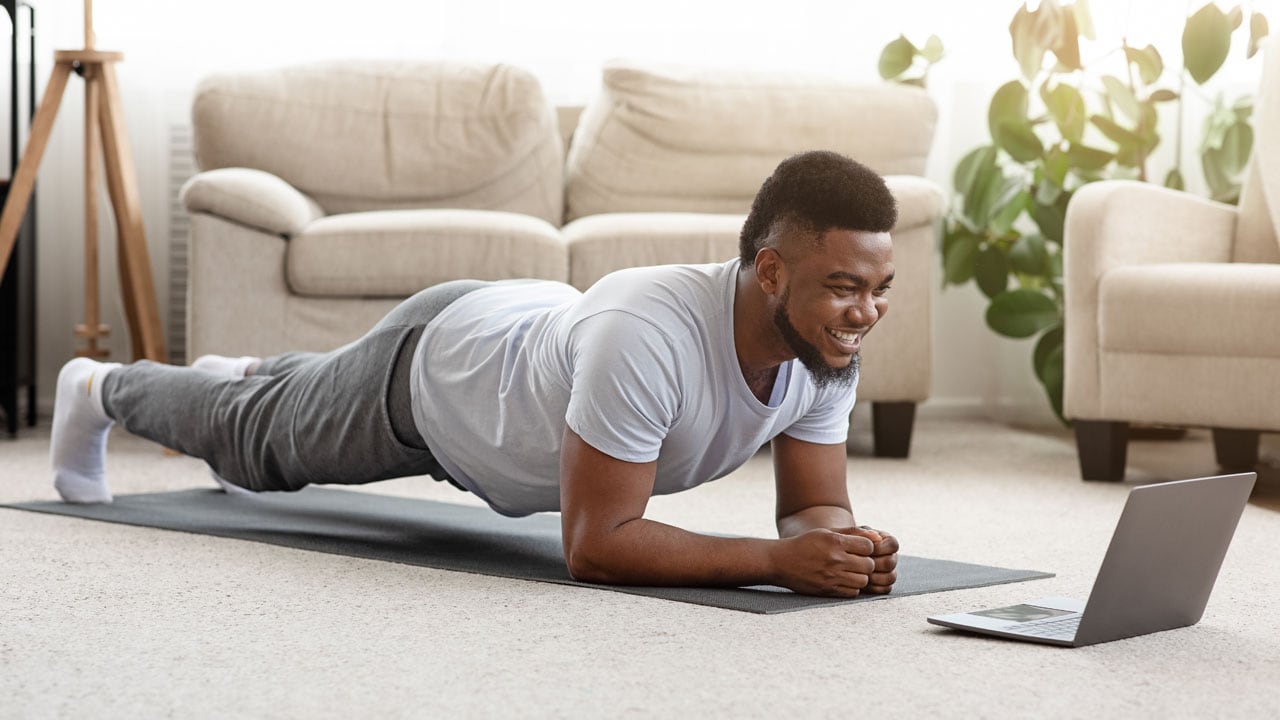
Set realistic goals to stay motivated. Start with small, achievable targets, like practicing 10 minutes daily, and gradually increase duration or frequency. Goals could include mastering a specific pose, improving flexibility, or simply showing up on the mat regularly.
Use online classes for structure and inspiration. Platforms like Yoga with Adriene or Alo Moves offer free or affordable classes for all levels, covering styles from Vinyasa to Yin. These resources provide guidance, especially for beginners, and allow you to explore new sequences or techniques.
Journaling can enrich your practice by helping you track progress and process emotions. After a session, note how poses felt, insights from meditation, or emotional shifts. A journal can also serve as a space to set intentions or reflect on your yoga journey.
Control the temperature to ensure comfort. Yoga is often practiced in a warm environment to relax muscles, but avoid extremes. Use fans in hot weather or heaters in cold conditions to maintain a pleasant temperature, typically around 70-75°F for most practices.
Incorporate sound to enhance focus. Soft instrumental music, nature sounds, or a sound machine can create a calming backdrop and mask external noise. Alternatively, silence or guided meditations may suit those seeking minimal distraction.
Establishing a consistent practice time, such as early morning or evening, can help make yoga a habit. Your dedicated space serves as a cue, signaling to your mind that it’s time to practice.
| Enhancement Tip | Implementation | Benefit |
|---|---|---|
| Realistic Goals | Start with 10 min/day | Builds consistency |
| Online Classes | Use Yoga with Adriene, Alo Moves | Provides guidance, variety |
| Journaling | Note progress, emotions | Deepens self-awareness |
| Temperature Control | Use fans, heaters | Ensures comfort |
| Sound | Music, nature sounds | Enhances focus, relaxation |
Tips for Small Spaces and Budget-Friendly Setups
Yoga is adaptable, making it possible to create a functional practice space even with limited room or resources.

Small spaces require creativity. Push back furniture to carve out temporary space, or practice in narrow areas like hallways. Focus on standing poses (e.g., Mountain Pose, Tree Pose) or seated meditation to minimize space needs. Use walls for support in poses like Half Moon or for inversions like Legs Up the Wall. Folding screens or curtains can create a sense of privacy in shared spaces.
Budget-friendly setups are achievable with affordable equipment and DIY solutions. Quality yoga mats are available for under $30, such as the Iuga Eco Friendly Non Slip mat. Instead of buying props, use household items: books for blocks, towels for straps, and pillows for bolsters. Second-hand stores or online marketplaces can offer deals on mats and props. Free online resources, like YouTube channels or community classes, provide access to guided practices without subscription costs.
Multi-Purpose spaces maximize utility. Your yoga area can double as a meditation corner, reading nook, or relaxation spot. Portable props, like foldable mats or lightweight blocks, make it easy to set up and store your practice area. Vertical storage solutions, such as wall hooks or shelves, keep props out of the way when not in use.
The essence of yoga lies in the practice, not the size or cost of the space. With a little ingenuity, you can create a meaningful yoga sanctuary on any budget.
| Challenge | Solution | Example |
|---|---|---|
| Small Space | Use hallways, standing poses | Practice in a 3x6 ft area |
| Limited Budget | Affordable mats, DIY props | Use books for blocks |
| Multi-Purpose | Portable props, vertical storage | Yoga/meditation corner |
Your Yoga Sanctuary Awaits
Creating a home yoga space is a rewarding journey that enhances your practice and nurtures your well-being. By selecting a quiet location, equipping it with a quality mat and props, cultivating a calming atmosphere with light, scent, and plants, and personalizing it with meaningful touches, you can craft a tranquil sanctuary. Regular maintenance keeps it inviting, while strategies like online classes and journaling deepen your practice. Even in small spaces or on a budget, yoga’s adaptability shines—use household items, free resources, and creative space solutions to make it work. Start small, let your space evolve with your practice, and enjoy the peace it brings. Share your yoga space tips in the comments.